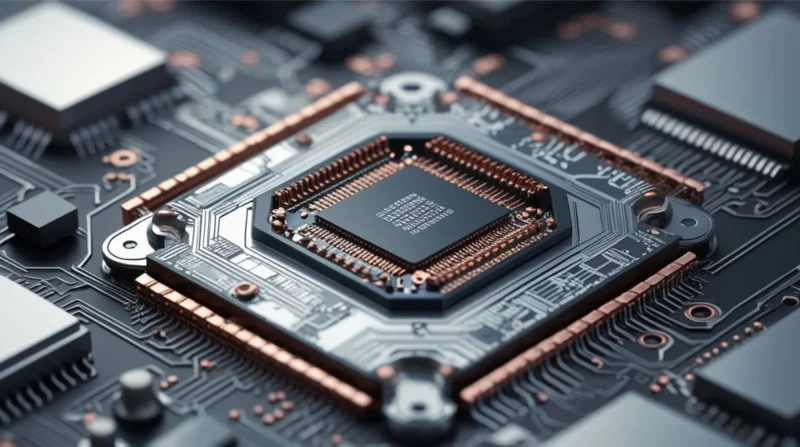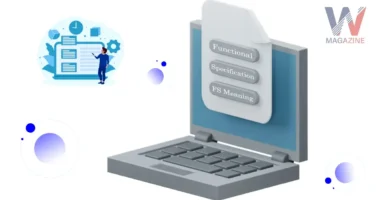Table of Contents
What Are Microscopic Chips?
Microscopic chips, also called microchips or more technically microelectromechanical systems (MEMS), are incredibly small electronic components that have transformed how our modern devices function. These chips combine tiny mechanical parts like sensors, actuators, and circuits onto a single platform, usually a piece of silicon. Despite their size often between 1 and 100 micrometers wide they play a major role in powering the technology we use every day.
These chips are invisible to the naked eye, but their impact is massive. From helping your smartwatch track your heart rate to enabling medical devices to monitor vital signs inside your body, microscopic chips make today’s technology smaller, faster, and effective, smarter. Their development is one of the main reasons why devices keep getting more compact while still offering more features and better performance.
How Do Microscopic Chips Work?
The core function of a microscopic chip is to process electrical signals. This might sound simple but it’s what makes them so powerful. Once electrical signals reach the chip, it can convert these signals into mechanical movements, interpret data, and trigger specific actions depending on the input.
Let’s take a MEMS sensor as an example. If it’s placed inside a fitness tracker, it can sense movement and vibration. When you take a step, the chip processes that mechanical motion and turns it into data your fitness app can read. Similarly, in an airbag system, a microscopic chip detects sudden deceleration and sends an instant signal to deploy the airbag.
What makes microscopic chips especially useful is their ability to integrate several functions into one tiny space. This efficiency leads to lower energy usage and faster processing, both of which are essential in portable and battery-powered devices.
Applications of Microscopic Chips
Microscopic chips are used in a wide variety of industries and their role is expanding as technology continues to advance. Here’s a look at some of the most common and growing areas where these chips are making a difference.
1. Medical Devices
In healthcare, microscopic chips are critical for diagnostics and patient monitoring. For instance, lab-on-a-chip devices can process blood or saliva samples on a micro-scale, making testing faster and less invasive. These chips can detect viruses, bacteria, or chemical markers within minutes, making them incredibly valuable in emergency and point of care settings.
They are also embedded in wearable medical devices, like smart patches and glucose monitors, to track patients’ health data in real-time. This allows doctors to monitor patients remotely, improving treatment plans and reducing hospital visits.
In advanced research scientists are developing microscopic chips that can be injected into the body to monitor and potentially treat conditions at the cellular level, offering new possibilities for cancer treatment, neural mapping, and more.
2. Consumer Electronics
One of the most widespread uses of microscopic chips is in everyday consumer electronics. Whether it’s your smartphone, laptop, smart TV or even your wireless earbuds these tiny chips are what keep everything running smoothly.
In mobile devices, they handle everything from touchscreen sensitivity to motion detection and facial recognition. In gaming consoles and augmented reality (AR) headsets, they enable immersive interaction by sensing orientation and movement.
Their ability to combine multiple tasks on a single chip has enabled the miniaturization of gadgets making electronics lighter, thinner and more powerful.
3. Automotive Industry
Cars today are no longer just mechanical machines they are sophisticated computers on wheels. Microscopic chips are found in nearly every system of a modern vehicle from safety to entertainment.
They help manage engine performance, monitor tire pressure and enable advanced features like adaptive cruise control, lane departure warnings and automatic braking. In electric and autonomous vehicles. microscopic chips are even more critical as they help coordinate sensors, cameras, and processors in real-time to ensure both performance and safety.
As electric vehicles (EVs) and self driving cars grow in popularity, demand for high performance chips continues to rise.
4. Industrial Automation
Factories and production plants rely on precise monitoring and control systems to maintain efficiency and safety. Here, microscopic chips serve as the brains behind smart manufacturing tools and industrial sensors.
They’re used to detect temperature changes, machine vibrations, fluid levels, and pressure in real-time. This information helps in predictive maintenance identifying and fixing issues before they lead to equipment failure. It also enhances automation and supports Industry 4.0, where machines communicate with each other and make decisions with minimal human input.
Advantages of Microscopic Chips
The appeal of microscopic chips lies in their many advantages
- Miniaturization: They allow engineers to build smaller devices without reducing. performance. This is especially important in portable and wearable technologies.
- Efficiency: By using less power and responding quickly to inputs, microscopic. chips improve the overall energy efficiency of a device.
- Integration: With the ability to combine sensing, processing and response. functions in a single chip, devices become simpler and more reliable.
- Cost-Effectiveness: Although the initial research and development can be costly. mass production makes them affordable and widely accessible.
These features make them essential for everything from healthcare to defense applications.
Challenges in Microscopic Chip Development
Even though microscopic chips are incredibly useful, there are several challenges in developing and manufacturing them.
1. Manufacturing Complexity
Building chips on such a small scale requires precision tools and cleanroom environments. The equipment and processes needed are expensive and need constant upgrading to keep up with design improvements. This can slow down production and raise costs.
2. Heat Dissipation
As more functions are packed into smaller chips, they can produce significant heat. Managing this heat without damaging components is a major challenge especially in high performance devices like computers or electric vehicles.
3. Material Durability
Microscopic chips must function reliably under various environmental conditions, including humidity, heat, vibration and even radiation in some cases. Finding materials that can withstand all these stressors while still being efficient and cost effective is not always easy.
The Future of Microscopic Chips
The journey of microscopic chips is far from over. In fact, we’re just scratching the surface of what these tiny tech marvels can achieve. Research is underway to create chips that are even smaller and more powerful, thanks to innovations in nanotechnology and material science.
One exciting development is the use of quantum chips, which rely on quantum bits (qubits) rather than regular bits. These could revolutionize computing by making calculations exponentially faster.
In medicine, researchers are working on bio compatible chips that can live inside the human body long term, collecting data or even delivering medicine precisely where it’s needed.
Another futuristic trend is neuromorphic computing, where chips are designed to mimic how the human brain processes information. These chips could power the next generation of artificial intelligence by making machines more capable of learning and decision making.
Conclusion
Microscopic chips may be tiny, but their impact is enormous. They are the silent workhorses behind the technology we use daily enabling everything from accurate medical diagnostics to the smartphones in our hands and the cars we drive.
As technology continues to evolve, microscopic chips will play an even more important role in innovation across all sectors. With continued research and development, they will become smarter, more efficient and more integrated into our lives than ever before.









